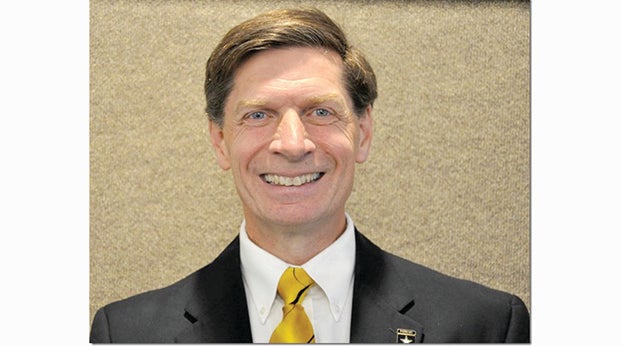How to behave in a cave: Jesus
Published 11:07 am Saturday, July 17, 2021

- Albert Earley
BY AL EARLEY
Columnist
In Plato’s famous “Allegory of the Cave,” some prisoners are chained inside of a cave, facing the back wall. Behind them is a fire, with people passing in front of it. The prisoners cannot turn their heads, and have always been chained this way. All they can see and hear are shadows passing back and forth and the echoes bouncing off of the walls. One day, a prisoner is freed, and dragged outside of the cave. He is blinded by the light, and confused, and resists being led outside. But, eventually his eyes adjust so that he is able to see the things around him, and even the sun itself.
He comes to realize that the things he thought were real were merely shadows of real things, and that life outside of the cave is far better than his previous life in chains. He pities those still inside. He ventures back into the cave to share his discovery with the others, only to be ridiculed because he can hardly see (his eyes have trouble at first re-adjusting to the darkness) and is violently resisted.
Through the centuries this allegory has been interpreted many different ways. Often, as a way to understand our experience when our current understanding of reality is shattered, and we realize something new and amazing about our lives or life in general. That is what happened to all the many witnesses to Jesus’ resurrection. Jesus didn’t really teach us how to live in a cave, but to live in His light of truth which shatters the darkness of any cave.
His cave, or tomb, is empty, and Jesus is alive and risen to rule the world. Because of Jesus’ resurrection from the dead He is victorious over sin, evil, and death. For example, Jesus’ resurrection reveals great truth about the mysterious question of what happens to us when we die. In I Corinthians 15:42-44 we read, “So will it be with the resurrection of the dead. The body that is sown is perishable, it is raised imperishable; it is sown in dishonor, it is raised in glory; it is sown in weakness, it is raised in power; it is sown a natural body, it is raised a spiritual body.” In this text Paul reveals that God promises to give all of us that die in the Lord a new body, a resurrection body, fitted for the resurrection life of eternity with God.
When we study what Jesus’ life was like outside His cave, or His tomb, we learn much of what happens to us when we die. When Mary Magdalene went to the tomb on Easter morning (John 20:11-18) she is able to recognize Jesus and speak to Him. This is true of all the other witnesses in the Gospels. We will be able to recognize one another and speak to each other in the life to come.
When Cleopas and another disciple met Jesus on the road to Emmaus they did not recognize Him at first, but when He broke bread with them they did recognize Him, and then He disappeared from their sight (Luke 24:13-32). Then Jesus is able to reappear in the locked upper room. Like Jesus, our resurrection bodies will not be limited by time or space.
At another appearance Thomas is not present and Jesus allows the other ten disciples to touch the wounds on His hands and feet (John 20:19-25). Our resurrection bodies will have substance, and we will be able to be touched. A week later Thomas is present and able to touch Jesus. Jesus teaches something very important for all disciples that will believe after Jesus’ ascension, that we are blessed for believing without seeing or touching (John 20:26-29).
When Jesus meets seven of the disciples at the Sea of Galilee he prepares and eats breakfast with them (John 21:9-12). Jesus doesn’t need to eat breakfast with His disciples, but He can and does. All of Jesus’ references to the banquet table in Heaven may be a teaching tool, but I think we learn from this that we will really be able to enjoy food in Heaven when we receive our resurrection bodies.
These are just a few of the many truths that Jesus reveals to us in His life, ministry, death, resurrection, and shattering the darkness of the cave that held Him for three days. We can choose to believe He is who He says He is, or we can live in a cave believing that the half-truths and lies of the world are reality. I don’t want to live in a cave. I choose to walk in the light of Christ. What about You?
To find out more about Al Earley or read previous articles, see www.lagrangepres.org





